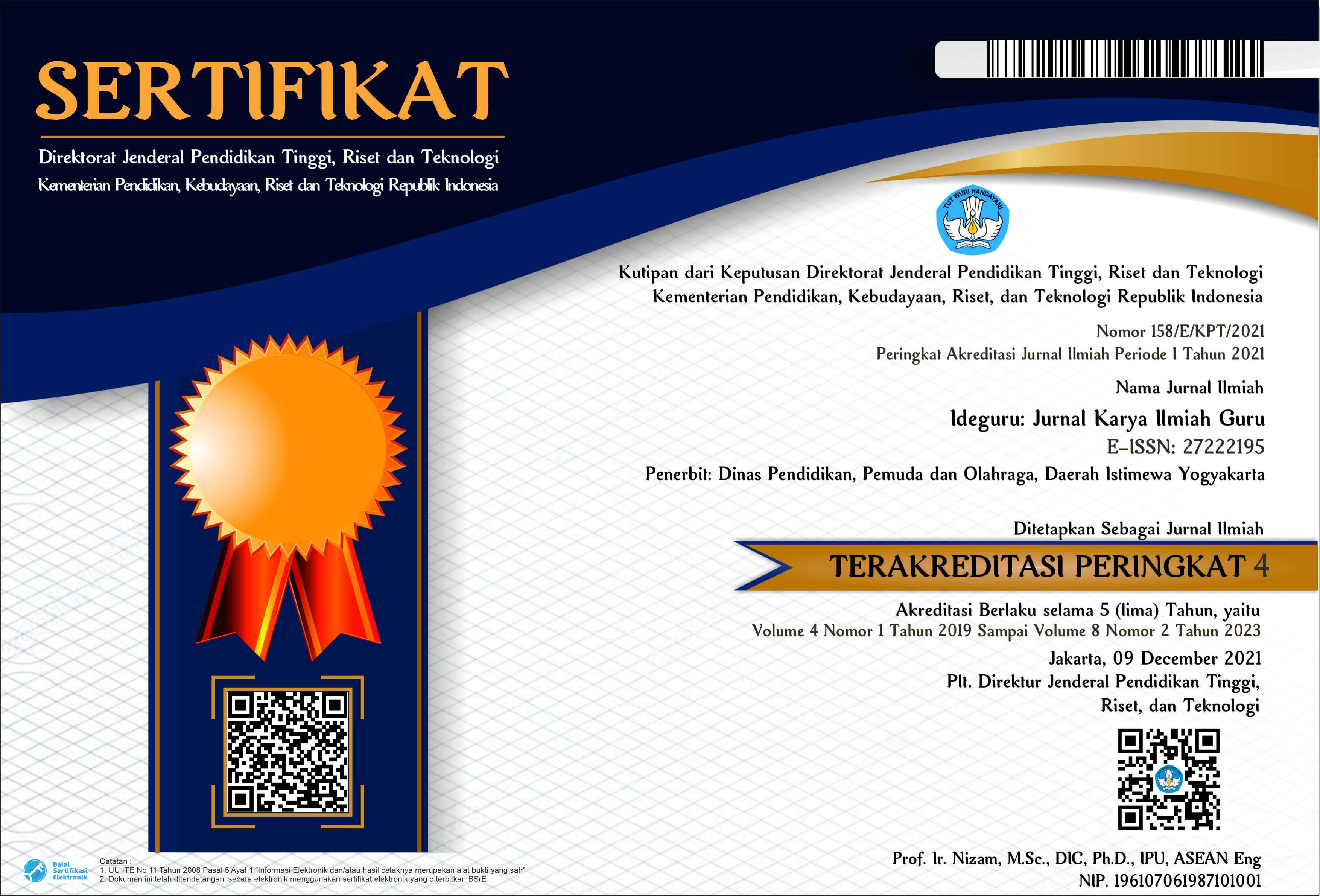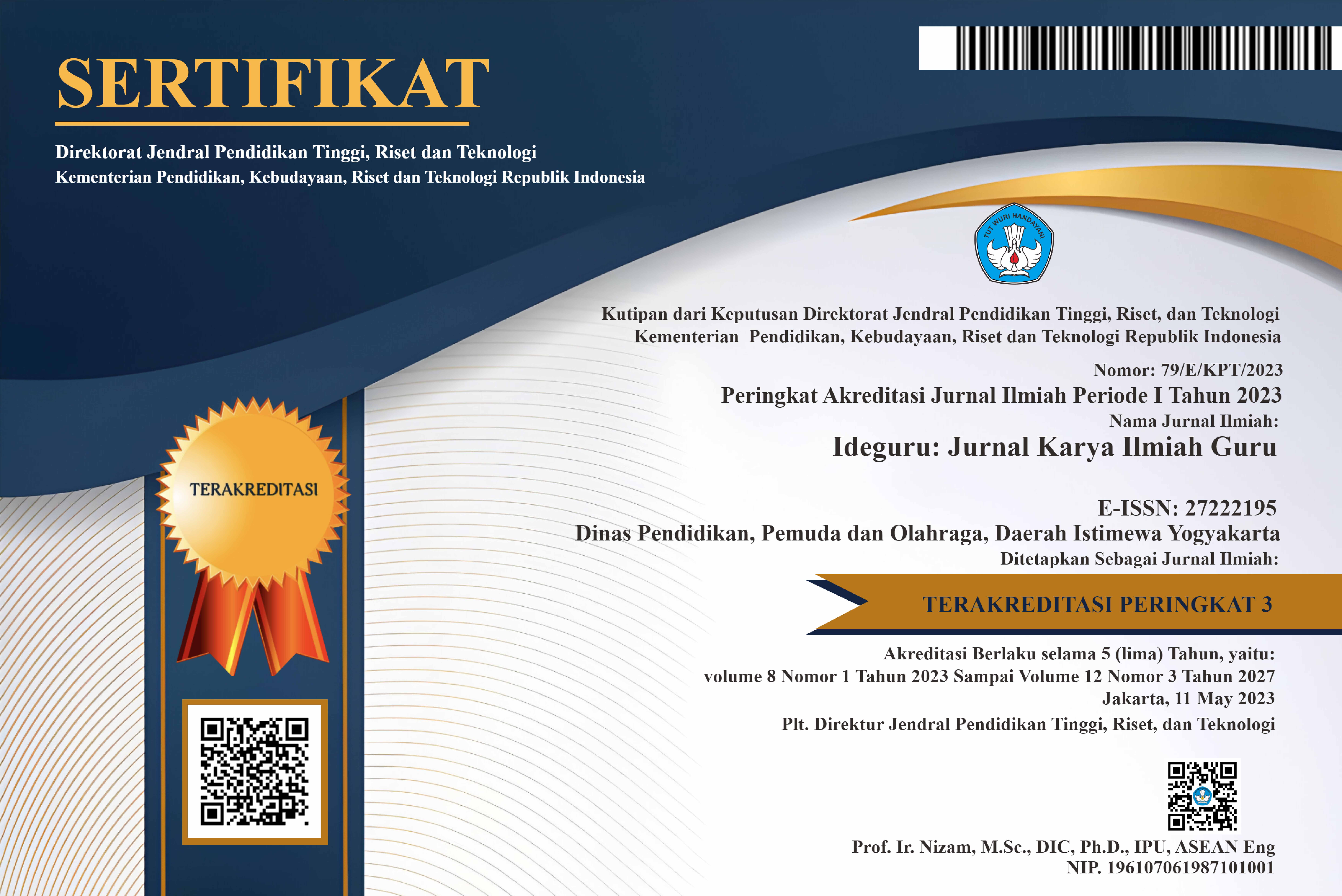Penenerapan Model PBL pada Konsep Hidrostatika IPA Terpadu Type Connected terhadap HOTS Siswa SMP
Abstract
This research aims to identify differences in students' high-level thinking abilities (HOTS) related to the concept of hydrostatics in connected-type integrated science between the group that took part in problem-based learning (PBL) and the group that did not. Apart from that, this study also aims to evaluate the impact of implementing the PBL model on students' higher-order thinking abilities. The research method used was an experiment with a quasi-experimental design, carried out in class VIII MTs Muhammadiyah Al-Haq Palu. The sample consisted of two classes: one experimental class applying PBL and one control class using the discovery learning method. Data was collected through a high-level thinking skills test in the form of an essay test with 6 questions. The research results show that there is no significant difference in higher level thinking abilities between students who use PBL and those who don't, as proven by the results of the difference test (t-test), with a significance value (2-tailed) of 0.183 > 0.05. However, the application of PBL in the concept of hydrostatics in connected type integrated science has proven to be effective in improving students' high-level thinking abilities, with an N-Gain for the experimental class of 0.65 (medium category) and the control class of 0.63 (medium category). In addition, each indicator of higher order thinking skills showed a more significant increase in the experimental class compared to the control class.
PDF Downloads
Copyright (c) 2024 Citra Dewi, Amiruddin Hatibe, I Komang Werdhiana

This work is licensed under a Creative Commons Attribution 4.0 International License.

 DOI:
DOI:














